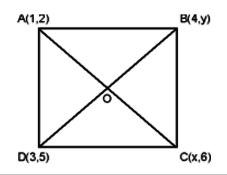9th Grade > Physics
GRAVITATION MCQs
:
A
Mass of a body is the amount of matter present in the body whereas weight is the magnitude of gravitational force acting on the body. Mass of an object remains constant. Weight of the body varies with 'acceleration due to gravity' because it depends on other parameters.
:
B
Weight of a body is given by:
W=mg
where:
m: Mass of the body
g: Acceleration due to gravity
At the center of earth, acceleration due to gravity is zero. This is because mass of earth is distributed uniformly about this point. For every small part of mass of earth that attracts the body in one direction, we can find another small mass that will attract it in opposite direction with the same force. The net force due to each such pair is zero.
Hence, net force at the center of earth is zero.
:
A
Weight of the body at earth's surface is:
We=GMmR2 .......(1)
where, G-universal gravitational constant, M-mass of earth and R-radius of earth, m- Mass of the body
Weight of the body at a height h above the earth's surface is given by
W′e=GMm(R+h)2
According to the question, h=R2
W′e=GMm(R+R2)2
W′e=4GMm9R2 ....(2)
Dividing equation (2) by equation(1), we get
W′eWe=4GMm/9R2GMm/R2
W′eWe=49
Given weight on earth's surface is, We=72 N
W′e72=49
We=32 N
:
D
Relative density of a substance is a pure ratio of density of the substance to the density of water. Hence, relative density has no unit.
:
A
Gravitation or gravity is a natural phenomenon by which all physical bodies attract each other. Any object with a mass will experience a gravitational force. Since it is attractive in nature, it always tries to pull the objects towards each other.

The direction of arrow D represents the gravitational force acting on A due to B. Similarly, the direction of arrow C represents the gravitational force acting on B due to A. The magnitude of the force acting on each other is equal, only the direction differs.
:
D
Archimedes principle states that the upward buoyant force that is exerted on an object which is immersed in a fluid, whether fully or partially submerged, is equal to the weight of the fluid that the object displaces.
It is used in the designing of ships, submarines. It is also used in lactometers and hydrometers as adulteration causes a change of density which can be easily identified using these tools. Archimedes principle has nothing to deal with the designing of thermometers.
:
A
Given:
mass of first body m1=40 kg
mass of second body m2=80 kg
distance between two bodies, R=15 m
G=6.673×10−11Nm2kg−2
Acc. to Newton's law of gravitation, Gravitational force, F=Gm1m2R2
So, F=6.673×10−11×40×80152
On solving, we get F=9.49×10−10 N
:
A
Any body in free fall is under acceleration due to gravity (g) and thus accelerates at 9.8 ms−2. When a body starts from rest, after one second it will gain an acceleration of 9.8 ms−2 and thus will be at a velocity of 9.8 ms−1 in the downward direction. When rounded off to the nearest integer, the answer becomes 10.
:
A
When an object is immersed in a liquid, the liquid exerts a force upwards on the object called 'Upthrust'. Also, the force due to gravitational attraction of the earth acts on the object downwards.
Upthrust is equal to the weight of the liquid displaced. So if density of the object is less than that of the liquid then lesser liquid has to be displaced in order to balance the weight of the object and thus the object floats.
:
A
The atmosphere is held to the Earth due to gravitational force of Earth. The gases in the atmosphere have a mass and hence Earth attracts them, as a result of which the gases do not escape from Earth.
















